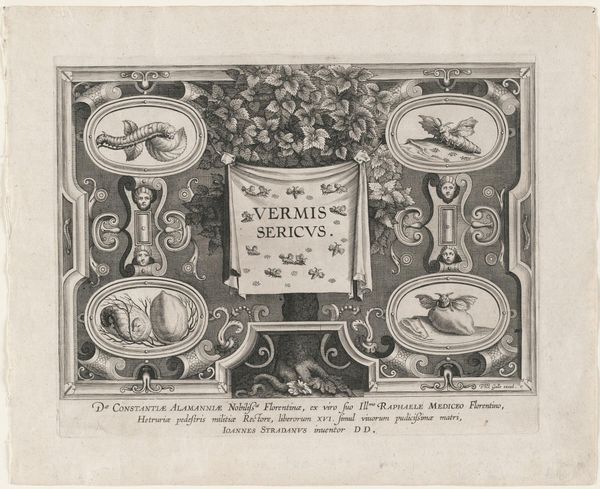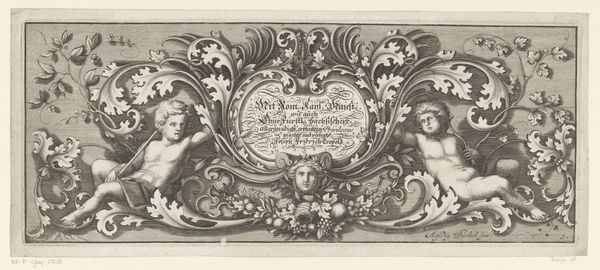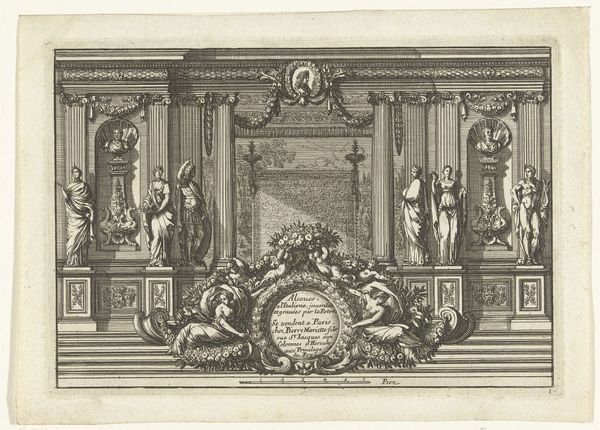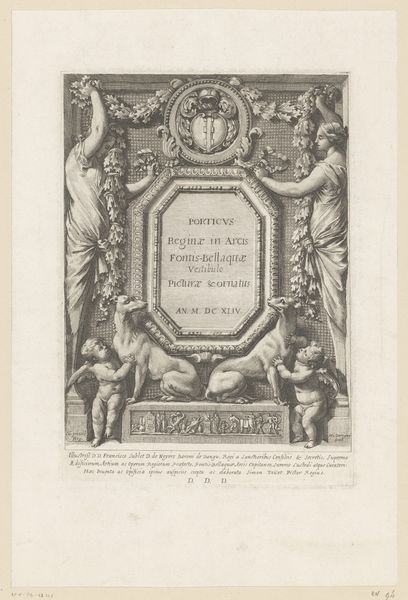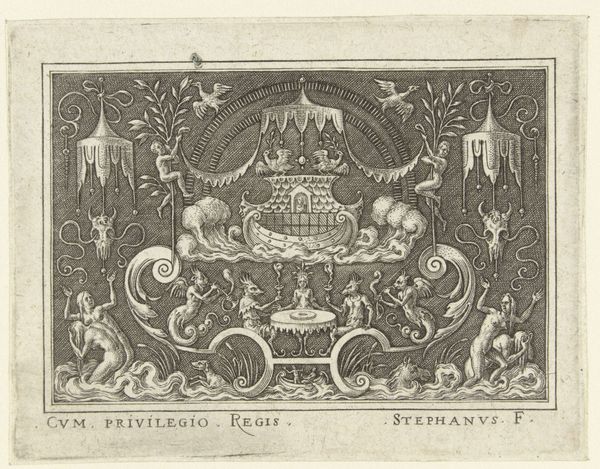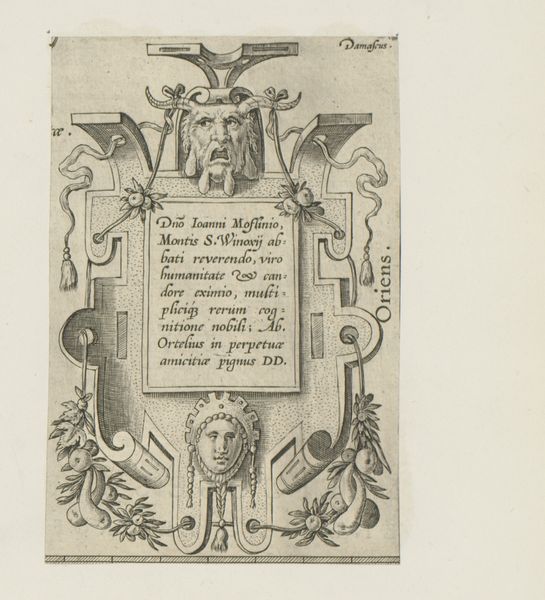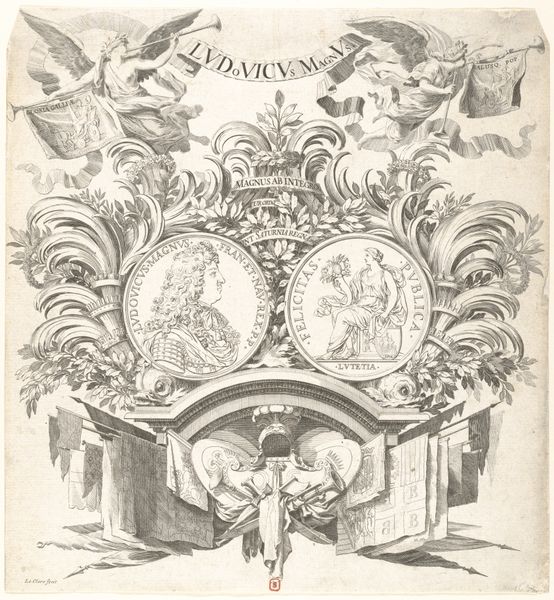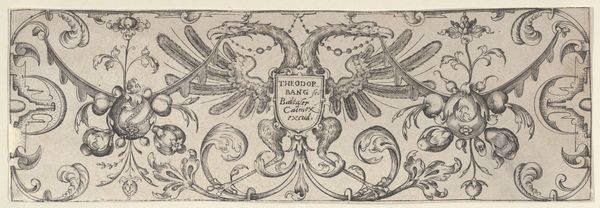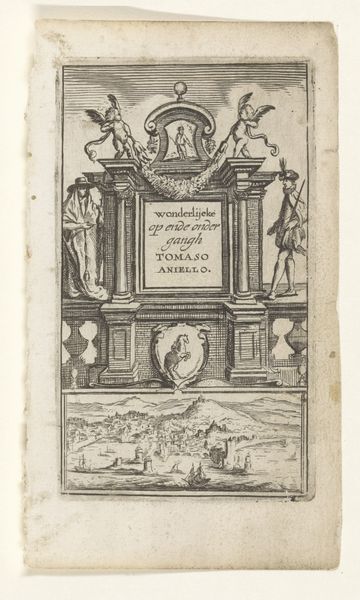![Title Plate from "The Introduction of the Silkworm" [Vermis Sericus] by Karel van Mallery](/_next/image?url=https%3A%2F%2Fd2w8kbdekdi1gv.cloudfront.net%2FeyJidWNrZXQiOiAiYXJ0ZXJhLWltYWdlcy1idWNrZXQiLCAia2V5IjogImFydHdvcmtzLzY2MDVlOTkzLTA1NmUtNGIwYi1iZGRmLWY5YjgwYWU0M2NkMy82NjA1ZTk5My0wNTZlLTRiMGItYmRkZi1mOWI4MGFlNDNjZDNfZnVsbC5qcGciLCAiZWRpdHMiOiB7InJlc2l6ZSI6IHsid2lkdGgiOiAxOTIwLCAiaGVpZ2h0IjogMTkyMCwgImZpdCI6ICJpbnNpZGUifX19&w=3840&q=75)
Title Plate from "The Introduction of the Silkworm" [Vermis Sericus] 1595
0:00
0:00
drawing, print, engraving
#
drawing
# print
#
11_renaissance
#
engraving
Dimensions: Sheet: 8 1/4 × 10 5/8 in. (21 × 27 cm)
Copyright: Public Domain
Curator: This is a title plate called "The Introduction of the Silkworm" or "Vermis Sericus," made around 1595 by Karel van Mallery. It’s an engraving. The level of detail is incredible. Editor: My first thought is, this is a visually striking illustration; however, despite the pretty adornments, I find a sort of latent tension between these delicate natural illustrations and the looming presence of that imposing, ornamental stonework. Curator: Exactly! That tension embodies the collision of the natural world and human enterprise during the Renaissance, particularly the commercial forces that animated such industries. This piece probably served as the title page for a treatise on silkworm cultivation, linking classical knowledge with the booming silk trade. Each stage in the worm’s life is painstakingly represented in separate compartments surrounding the Latin title: Vermis Sericus, or Silk Worm. Editor: Precisely. Beyond its aesthetic value, the engraving exposes a complex narrative of global exploitation, not only regarding animal labour—in this case, silkworms—but, given the socio-historical context, also insinuating the historical precedents of the future colonial endeavors and extractivist economic practices that devastated Indigenous and peasant communities worldwide. Curator: Indeed, those images function as more than just natural history illustrations. The silkworm represented industry, transformation, and prosperity; however, like many such symbols, its power dynamics need to be examined and reconsidered. The life cycle displayed becomes a symbol of exploitation and industrial manipulation, something that extends well beyond just silkworms. Editor: Precisely! Art from the early modern period is deeply embroiled in these early exploitations and manipulations, helping to further and extend this paradigm into the future, well past our current era. Curator: The ability of these engravings to distill philosophical ideas, trade imperatives, and cultural beliefs makes it all the more fascinating to explore. Editor: Understanding van Mallery's "Vermis Sericus" requires not only contemplating its artistic brilliance but acknowledging its complex implication within exploitive economic frameworks.
Comments
No comments
Be the first to comment and join the conversation on the ultimate creative platform.
